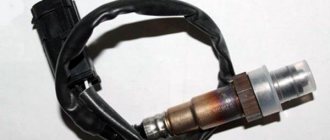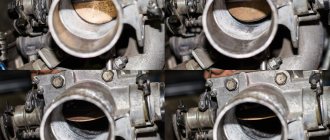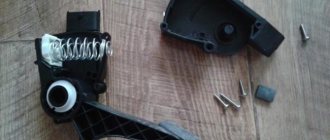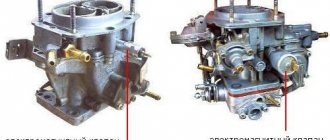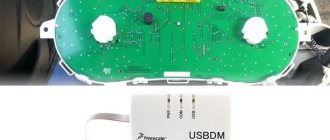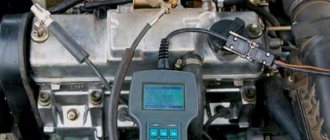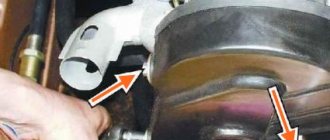To identify the vehicle and reliably select the throttle sensor for Suzuki Baleno EG Sedan , you should carefully select the vehicle modification. To do this, use clarifying information with data containing: power, measured in horsepower (example 103 hp), engine size (example 1.6 liters), type (example gasoline) and model + engine code, as a rule, this parameter rarely used, but you can only find it in the vehicle title, you can also pay attention to the drive axle (there are rear, front or all-wheel drive), and a mandatory parameter is the release date, which divides the vehicle model into restyling, pre-restyling, first and last year production.
This data serves to uniquely install spare parts during a certain production period, as manufacturers are constantly upgrading cars off the assembly line.
Select the vehicle modification to search for the throttle sensor
- Suzuki Baleno EG Sedan 1.3 71 hp
id7916 Engine: volume - 1.3 liters, power - 71 hp, type - petrol, model - G13BA. Drive: front. Year of manufacture: 1996-2002 - Suzuki Baleno EG Sedan 1.3 i 16V 85 HP
id4772 Engine: volume - 1.3 liters, power - 85 hp, type - petrol, model - G13BB. Drive: front. Year of manufacture: 1995-2002 - Suzuki Baleno EG Sedan 1.5 97 hp
id24568 Engine: volume - 1.5 liters, power - 97 hp, type - petrol, model - G15A. Drive: front. Year of manufacture: 1995-1998 - Suzuki Baleno EG Sedan 1.6 i 16V 98 HP
id4773 Engine: volume - 1.6 liters, power - 98 hp, type - petrol, model - G16B. Drive: front. Year of manufacture: 1995-2002 - Suzuki Baleno EG Sedan 1.6 i 16V 4×4 98 HP
id4774 Engine: volume - 1.6 liters, power - 98 hp, type - petrol, model - G16B. Drive: full. Year of manufacture: 1995-2002 - Suzuki Baleno EG Sedan 1.8 GTX 121 hp
id5385 Engine: volume - 1.8 liters, power - 121 hp, type - petrol, model - J18A. Drive: front. Year of manufacture: 1996-2002 - Suzuki Baleno EG Sedan 1.8 i 4x4 121 hp
id9688 Engine: volume - 1.8 liters, power - 121 hp, type - petrol, model - J18A. Drive: full. Year of manufacture: 1996-2002 - Suzuki Baleno EG Sedan 1.8 124 hp
id49085 Engine: volume - 1.8 liters, power - 124 hp, type - petrol. Drive: front. Year of manufacture: 1999-2002 - Suzuki Baleno EG Sedan 1.9 TD 75 HP
id11540 Engine: volume - 1.9 l., power - 75 hp, type - diesel, model - DHW (XUD9SD). Drive: front. Year of manufacture: 1998-2002
In the next step, for an expanded selection, you can enter the vehicle's Vin code to go to illustrated catalogs, where you can find the layout of parts down to the bolt and duplicates that are not in the catalog of analogues.
See also other spare parts
Signs of malfunction and replacement of the throttle position sensor on a VAZ 2114
A restyled version of the famous VAZ nine, the VAZ 2114, appeared in mass production in 2003. At first, an eight-valve one and a half liter VAZ-2111 engine was installed on it, then there was a 1.6-liter VAZ-11183, and in 2010 they began installing a VAZ 21126 engine with a power of 98 hp. With. All these power units have in common the fact that they are fuel injected.
The purpose and principle of its operation of the throttle position sensor
Injection engines required the installation of a large number of automatic devices that regulate and monitor the activities of all power plant systems. The drive principle of one of the main mechanisms regulating the fuel supply to the engine - the throttle valve - has changed. The drive became electric, electronically controlled.
Its difference from mechanical is as follows:
- there is no mechanical connection between the gas pedal and the throttle valve itself;
- Idle speed is regulated by moving this very damper.
Since there is no longer a rigid connection between the pedal and the damper, all control is carried out through the operation of electronic systems. In this scheme, along with the control unit, the throttle sensor plays an important role.
The device itself is installed on the same axis with the throttle valve. It works like a potentiometer:
- One output of the sensor receives a 5 V electrical signal, the opposite is connected to ground. The third channel, from the moving contact, sends an electrical signal to the controller. When the damper is turned, the voltage coming from the current collector slider to the output changes;
- when the ignition is turned off, you can measure the voltage supplied to the TPS using a measuring device. To do this, you need to install the probe needles on the input contact and ground. If the throttle valve is closed, then the tester should show no more than 0.7 V and no less than 0.5 V. When the engine is running, the voltage should increase as the valve opens and, at its maximum open position, show 4 V (+0.3);
- when the throttle valve opening angle changes, the voltage going to the controller from the TPS slider changes and it regulates the fuel supply;
- TPS is associated with the operation of the idle speed control device (IAC). At startup, if the damper is in the closed position, then when the controller receives such a signal from the sensor, it connects the IAC and additional air flows into the engine, bypassing the closed damper.
Location of the TPS on the VAZ 2114
The performance of the TPS must be monitored by measuring the resistance using an ohmmeter. To do this, the device is connected to the input and output contacts of the sensor. When you press the gas pedal, there should be a smooth change in resistance, but if the device shows zero or the resistance goes to infinity, this indicates a malfunction of the TPS on the VAZ 2114.
Experienced motorists recommend buying TPS VAZ 2114 from Moscow, OJSC "Schetmash" Kursk and OJSC "Avtoelektrika" Kaluga (Avtoelektrika is a contactless TPS).
Signs of a malfunctioning throttle position sensor
During the operation of a car engine, especially one stuffed with all sorts of electronic stuffing, all sorts of problems can occur. If we consider one of the elements of this electronic filling - the VAZ 2114 throttle sensor, signs of a malfunction may be as follows:
- at idle high speeds are possible, this is the most characteristic sign;
- a noticeable decrease in engine power and deterioration in throttle response;
- when pressing the accelerator there are jerks, dips and twitches;
- floating idle speed;
- When changing gears the engine turns off spontaneously.
Of course, such signs can appear for other reasons, but they are very typical for TPD. Checking it by measuring the resistance is not at all difficult; you don’t even need to remove anything, but with a high degree of probability you can determine the cause of the troubles with the engine.
In the factory, film-resistor DPZDs are installed on VAZ 2114 engines; the service life of such a device is about 50 thousand kilometers. Failure or unstable operation most often occurs for the following reason.
Checking the throttle position sensor on a VAZ 2114
The moving contact of the sensor, or slider, moves when the position of the damper changes, constantly contacting the resistive field of the TPS. As a result of prolonged interaction, the field is destroyed and the contact disappears, the signal is no longer transmitted to the controller, or is transmitted unevenly, causing unstable operation of the automation.
Recently, non-contact throttle sensors have begun to go on sale. They are produced in Kaluga by Avtoelektrika. They already have many positive reviews from car enthusiasts. The rotor of this device is made of non-magnetic material on which a magnet is located. The second component, the stator, is located at a strictly specified distance from the magnet and is made of a material that perceives the magnetic field. These sensors are twice as expensive, but they have a very long service life.
The causes of DPZD malfunctions can be
- oxidation of contacts - you can help in this case, you need to take a special WD liquid and use a cotton swab to clean all the contacts in the block and under the cover;
- worn sensor substrates if their design included sputtering of a resistive layer;
- the moving contact fails - it is possible that some tip of this contact may break, then scoring will form and other tips will also fail;
- The throttle valve does not close completely at idle - in this case, you can slightly file the sensor seats and the throttle valve should close.
Having studied the signs of malfunction of the throttle position sensor and determined its unsuitability, measures must be taken to replace it.
Film-resistor TPS are sold in all auto parts stores and their cost is quite low, no more than 300 - 400 rubles, so repairing the throttle position sensor does not seem advisable. Repairs will take a lot of time, while replacing this device is quite simple.
Of course, there are fans of repairing any part and such cases are described in relation to the TPS. But the example given is most likely an atypical case. A car enthusiast, having opened the sensor, discovered the presence of a microcrack in the area of one of the contacts. He sealed this crack with conductive glue and the device’s performance improved.
However, the resistive layer cannot be restored, and such repair kits are not offered for TPS.
Procedure for replacing the throttle sensor
- Prepare a new TPS, a foam sealing ring for the throttle pipe and a Phillips screwdriver.
- Turn off the ignition, open the hood and disconnect the battery by removing the negative terminal.
- Determine the location of the DPZD, press the plastic latch and disconnect the block with all the wires from it.
- Using a Phillips screwdriver, unscrew the two bolts securing the throttle body to the throttle body and remove it.
- In place of the old sealing foam gasket, which should be located between the throttle valve pipe and the TPS, install a new one and attach a new sensor to the throttle body, tightening both bolts as tightly as possible so that in no case does the device vibrate.
- Connect the block with wires to the TPS connector.
- If for some reason the battery was not disconnected before replacing the sensor, then after installing the new sensor and connecting the terminal with wires to it, you need to turn off the power to the car for five minutes by removing the terminals from the battery.
- Check that the sensor is installed correctly. It is necessary to open the damper and rotate the sensor drive sector; this can be done by pulling the throttle cable. If you cannot turn the sector, then you need to reinstall the TPS. To do this, remove it and turn it 90 degrees relative to the damper axis and install it again.
- The throttle sensor does not require any additional manual adjustment after installation. You can check its performance by measuring the voltage with a tester so that it matches the specified one. And also use an ohmmeter to check the smoothness of the resistance change when changing the throttle position.
If the driver is attentive to the behavior of his car and constantly monitors the performance of the car’s electronics and engine, then he can be confident that no surprises await him on the road. You must constantly remember that your car will serve you for a long time and faithfully only if you take care of it and its insides. Any car loves care, even after leaving the car wash you can feel how softly the engine starts running and how smoother the car drives on the road.
Fuel system
Fuel tank, Water level sensor, Fuel level sensor, Tank vent valve, Fuel tank button, Fuel tank cap, Fuel neck, Fuel pump, Fuel pump, Fuel pump strainer, Fuel pump gasket, Fuel pump relay, Fuel injector, Injector ring, Throttle valve, Sensor throttle valve, Throttle pipe, Idle air regulator, Air receiver, Throttle valve heating tube, Turbine (turbocharger), Turbine gasket, Solenoid valve, Injection pump, Injection pump valve, Compressor, Compressor gasket, Carburetor, Fuel rail (rail), Fuel pressure regulator , Fuel line, Fuel valve, Fuel hose, Fuel pipe, Air flow meter, Engine control unit, Air pipe, Intake manifold, Intake manifold gasket, Additional air pump, Fuel pump, Gas pedal, Potentiometer, Throttle cable
Throttle sensor VAZ 2114: malfunctions
As you understand, symptoms of a breakdown can appear at any time. And they are very similar to those that happen when air flow, detonation, XX, and other sensors fail. Here is the main list:
- Idle speed is unstable.
- If you suddenly release the gas pedal, the engine stops. It also stalls when changing from one speed to another.
- Often the car jerks at any one position of the accelerator pedal. This is usually the starting position.
- No idle.
When diagnosing, be sure to take into account the possibility of failure of the XX sensor, because all these symptoms also appear when it breaks down. To make sure the TPS is working properly, you need:
- Multimeter.
- Two wires in insulation. Length no more than 50 cm.
The verification procedure looks like this:
- Find the VAZ 2114 throttle position sensor in the engine compartment.
- Disconnect the block with wires from the TPS.
- Connect the positive terminal of the voltmeter to terminal “A” on the block.
- Negative terminal to the “–” of the battery or to the body.
- Turn on the ignition.
- Monitor the device readings. When the voltage value is close to zero, one can judge the serviceability of the TPS and the presence of a breakdown in the electrical circuit or ECU. If the voltage is close to 5 V, then the sensor is faulty.
- If the sensor fails, there is no point in repairing it! Install the new one and forget about it!
Now you know how to check the TPS on your car. Let's move on directly to repair and replacement.
Lighting
Light bulbs, Headlight lamp, Halogen lamps, Xenon lamps, LED lamps, PTF lamp, Rear PTF lamp, Tail lamp lamp, Brake lamp, License plate lamp, Brake lamp, Reversing lamp, Parking lamp, Turn signal lamp, Instrument panel lamp, Trunk lamp, Engine compartment lamp, Interior lamp, Heater backlight lamp, Headlight, Left headlight, Right headlight, Xenon headlight, Headlight washer, Headlight washer pump, Headlight washer nozzle, Headlight range control, Additional headlight, Finder headlight, Headlight ignition unit, Sensor ground clearance, Headlight mount, Headlight cover, Headlight reflector, LED headlight, Headlight glass, Fog light (PTF), Fog light, PTF mount, Fog light, PTF frame, Tail light, Reversing light, Brake light, Running lights, Side lights , Reflector (reflector), Side marker, Parking lights, Turn signal, Side turn signal, Rear turn signal, Front turn signal, Repeater, Lamps, License plate light, Trunk light, Door light, Engine light, Dashboard light, Interior light, Rotating light
Throttle sensors for VAZ 2114
Principle of operation:
The sensor measures resistance and transmits the values to the computer. From these values, the computer calculates what position the throttle valve is in.
Symptoms of sensor failure
-A sharp drop in speed, then a sharp jerk when pressing the gas pedal. When you press the pedal the contact disappears. As the accelerator is pressed, the contact suddenly returns. Sharp acceleration follows
— At idle the revolutions jump very much, above 2000. The car keeps the revolutions constantly and does not drop them.
Replacing the throttle position sensor (TPS)
Using the 11 key, remove the terminals from the battery.
Remove the plastic cover from the engine.
Disconnect the chip from the sensor.
Take a Phillips screwdriver and unscrew the 2 screws on the throttle position sensor.
After this, the sensor can be removed. We move the boot from the old sensor to the new sensor and put it in place.
tighten the two bolts, put on the chip and you don’t need to adapt anything.
Another video with replacing the sensor on a VAZ 2115. If something is unclear to you, write in the comments.

